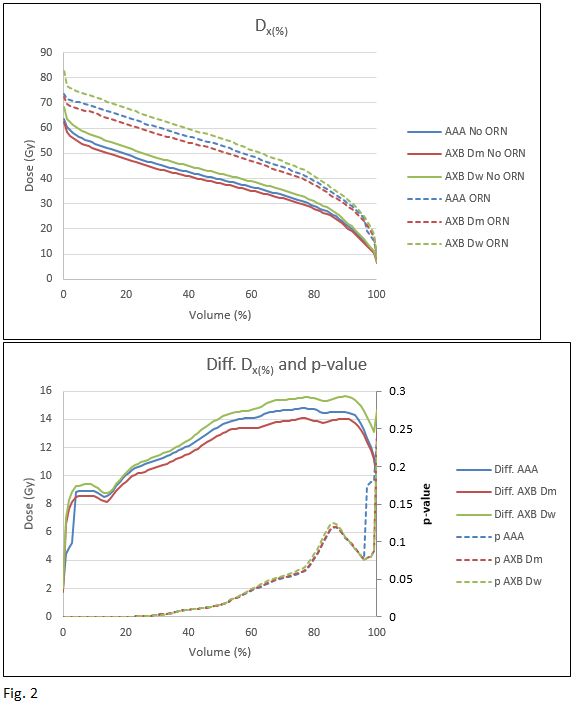Osteoradionecrosis of the mandible in head and neck cancer patients: dose-volume correlations
Carles Muñoz-Montplet,
Spain
PD-0160
Abstract
Osteoradionecrosis of the mandible in head and neck cancer patients: dose-volume correlations
Authors: Carles Muñoz-Montplet1, Jordi Marruecos2, Irene Oliveras3, Martí Foix4, Diego Jurado-Bruggeman1
1Institut Català d'Oncologia, Medical Physics and Radiation Protection, Girona, Spain; 2Institut Català d'Oncologia, Radiation Oncology, Girona, Spain; 3Institut Català d'Oncologia, Radiation Oncology , Girona, Spain; 4University of Barcelona, Physics Faculty, Barcelona, Spain
Show Affiliations
Hide Affiliations
Purpose or Objective
The
mandible's risk for osteoradionecrosis (ORN) is positively related to certain dose-volume
histogram (DVH) parameters. This study aimed to determine the relationship
between any DVH parameter of the mandible and ORN incidence in patients with
head and neck (H&N) cancer treated with volumetric modulated arc therapy
(VMAT). We performed this study for different algorithms and dose reporting
modes.
Material and Methods
We
reviewed medical records to identify ORN of the mandible and its localization
in a series of 106 patients diagnosed with H&N cancer, treated with a
prescription dose of 70 Gy using dual-arc VMAT at our institution between
October 2013 and May 2015. We only included patients with a minimum follow-up
of 2 years. We calculated the mandible's mean Vx and Dx DVHs and performed
heteroscedastic t-tests to evaluate the significance (p<0.01) of the
differences between patients with and without ORN. We performed calculations
with two algorithms implemented in the Eclipse treatment planning system
(Varian Medical Systems; Palo Alto, CA, USA), namely the Analytical Anisotropic
Algorithm (AAA) and Acuros XB (AXB) for both dose-to-medium (Dm) and
dose-to-water (Dw) reporting modes.
Results
We
observed ORN in 7 patients out of the 73 who had a minimum follow-up of 2 years
(mean 5.2 years). Fig.1 shows that patients with ORN had higher Vx values,
especially around 50 Gy, that Vx correlation with ORN was significant in the
45-55 Gy dose range, and that this range was shifted to higher and lower doses
for AXB Dw and AXB Dm respectively compared to AAA. Fig. 2 shows that patients
with ORN had higher Dx values, especially for low dose volumes, but that ORN
significantly correlated with Dx corresponding to 40% or smaller volumes.
Constraints in terms of Vx and Dx would depend on each algorithm and reporting
mode.

Conclusion
We
observed ORN in 10% of H&N patients treated with VMAT. Vx and Dx values are
higher for patients with ORN. Intermediate Vx and high Dx values significantly
correlate with ORN. Although this is independent of the algorithm and reporting
mode selected, they must be considered to specify constraints in terms of Vx
and Dx.